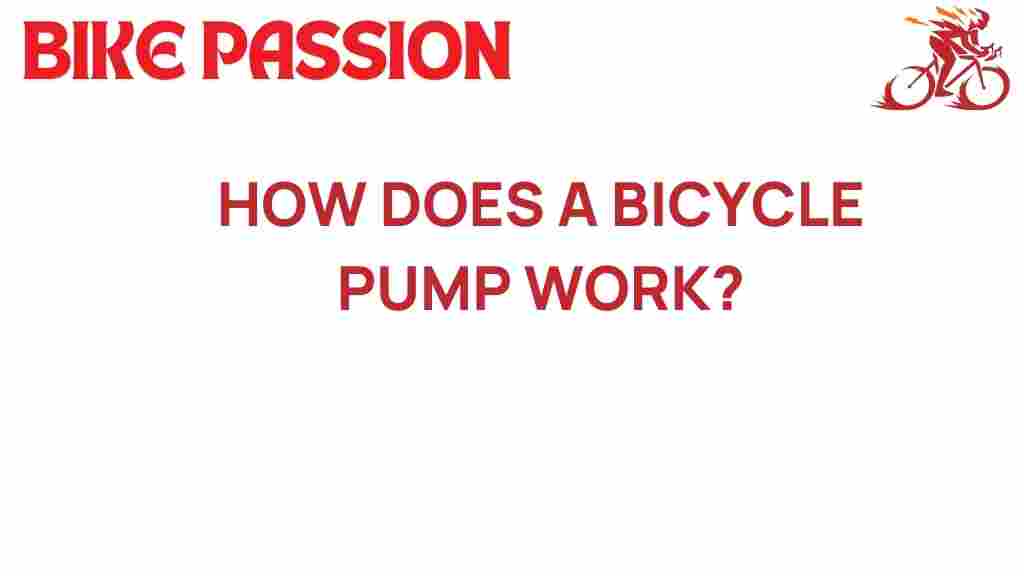Unraveling the Mechanics: How Does a Bicycle Pump Work?
Bicycle pumps are essential tools for any cyclist, playing a crucial role in ensuring that your bike tires are properly inflated for a safe and enjoyable ride. Understanding the mechanics of a bicycle pump not only helps in maintaining your cycling gear but also empowers you to perform DIY maintenance. In this article, we will delve into the mechanics of how a bicycle pump works, discuss inflation techniques, and provide valuable cycling tips to enhance your riding experience.
The Basics of a Bicycle Pump
A bicycle pump is a device designed to inflate the tires of a bicycle. The core mechanics involve the movement of air into the tire, increasing its pressure. There are various types of bicycle pumps, including:
- Floor Pumps: These are larger and designed for home use. They provide high volume and pressure with less effort.
- Hand Pumps: Compact and portable, these are perfect for carrying on rides for emergency inflation.
- CO2 Inflators: These use CO2 cartridges for quick inflation, ideal for race situations.
Each type of pump functions on the same basic principle: the movement of air, facilitated by a piston and a set of valves.
Understanding the Mechanics of Inflation
The mechanics of inflation in a bicycle pump can be broken down into the following steps:
- Air Intake: When you pull the handle of the pump, the piston moves down, creating a vacuum in the pump chamber.
- Air Entry: This vacuum opens the intake valve, allowing air to enter the pump.
- Pressure Build-Up: As you push the handle back down, the piston compresses the air inside the chamber. The pressure rises.
- Air Transfer: Once the pressure in the chamber exceeds the pressure in the tire, the discharge valve opens, allowing air to flow into the tire.
This cycle repeats as you continue to pump, increasing the tire pressure until it reaches the desired level.
Types of Valves and Their Importance
Understanding the types of valves on your bicycle tires is crucial for effective inflation:
- Schrader Valve: Commonly found on mountain bikes and some hybrid bikes. It resembles a car tire valve and is compatible with most pumps.
- Presta Valve: Slimmer and often found on road bikes. It requires you to unscrew the top before pumping.
Each valve type requires a specific technique for inflation, so be sure to know which type your bicycle uses to avoid any maintenance issues.
Choosing the Right Bicycle Pump
When selecting a bicycle pump, consider the following factors:
- Type of Valve: Ensure the pump is compatible with your bike’s valve type.
- Pressure Rating: Check the maximum PSI (pounds per square inch) to ensure it meets your tire pressure requirements.
- Portability: If you often ride long distances, a lightweight, compact pump is ideal.
Investing in a quality bicycle pump is an important aspect of your cycling gear, as it can significantly affect your riding experience.
Maintenance Tips for Your Bicycle Pump
To ensure your bicycle pump operates efficiently, regular maintenance is essential. Here are some tips:
- Clean the Pump: Dust and debris can clog valves and mechanisms. Regularly wipe down your pump to keep it clean.
- Check for Leaks: Periodically inspect the pump for any air leaks or damages that could affect inflation.
- Lubricate Moving Parts: Use a silicone-based lubricant on the piston and other moving parts to ensure smooth operation.
Proper maintenance of your bicycle pump will prolong its lifespan and improve performance.
DIY Bicycle Pump Repairs
Sometimes, you might encounter issues with your bicycle pump that can be resolved with some DIY repairs. Here are some common problems and their solutions:
- Air Leak: If your pump is leaking air, check the seals and replace any worn-out O-rings.
- Sticking Piston: A sticking piston can often be resolved by cleaning and lubricating the pump.
- Valve Issues: If the valve is stuck or not sealing properly, check for debris and clean the area around the valve.
These simple DIY repairs can save you time and money, ensuring your pump is always ready for use.
Troubleshooting Common Issues
If you find yourself struggling with your bicycle pump, here are some troubleshooting tips:
- Pump Won’t Inflate: Check the connection to the valve. Ensure it’s secure and properly aligned.
- Pump Feels Stiff: This could indicate a lack of lubrication. Apply silicone lubricant to the moving parts.
- Pressure Gauge Not Working: If your pump has a gauge and it’s not reading accurately, it may need recalibration or replacement.
Knowing how to troubleshoot your pump can help you maintain efficient cycling gear and avoid unnecessary delays during your rides.
Essential Cycling Tips for Optimal Tire Pressure
Maintaining the correct tire pressure is vital for performance and safety. Here are some essential cycling tips:
- Check Tire Pressure Regularly: Make it a habit to check your tire pressure before every ride.
- Know the Recommended PSI: Consult your bike manufacturer’s specifications for the ideal pressure range for your tires.
- Adjust for Conditions: Lower tire pressure can provide better traction on rough terrain, while higher pressure can reduce rolling resistance on smooth roads.
By following these tips, you can enhance your cycling experience and ensure your safety on the road.
Conclusion
Understanding the mechanics of how a bicycle pump works is essential for every cyclist. With the right knowledge about inflation, valves, and maintenance, you can ensure your bicycle is always ready to ride. Whether you’re performing DIY repairs or simply keeping your cycling gear in top shape, a well-maintained bicycle pump is an invaluable tool. For further reading on bicycle maintenance, check out this resource. Remember, a well-inflated tire not only enhances performance but also ensures your safety on every ride.
For more cycling tips and tricks, visit this site for additional resources and guides.
This article is in the category Gear and created by BikePassion Team
